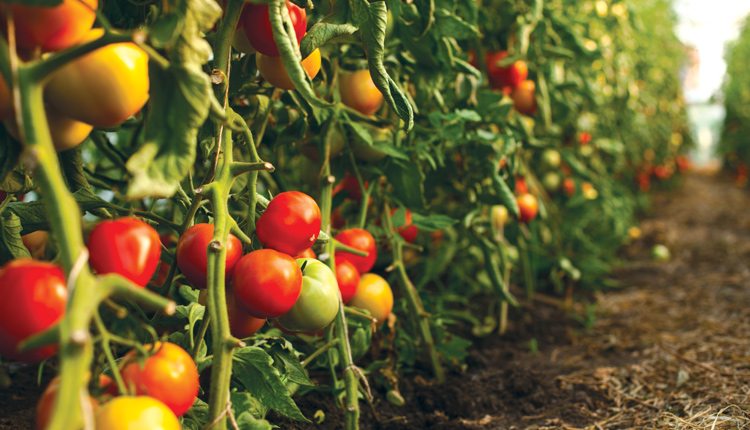Affiliations
1 Department of Metabolic Biology, John Innes Centre, Norwich Research Park
2 Max-Planck-Institute of Molecular Plant Physiology
3 The Sainsbury Laboratory, Norwich Research Park
4 National Key Laboratory of Crop Genetic Improvement and National Center of Plant Gene Research, Huazhong Agricultural University
5 Division of Crop Improvement, Indian Council of Agricultural Research – Central Potato Research Institute
6 Institute of Sciences of Food Production C.N.R. Unite of Lecce
Introduction
The use of transcription factors (TFs) to activate or suppress secondary metabolism has provided effective strategies to engineer plants enriched in valuable secondary metabolites. However, the importance of primary metabolism to engineer high levels of plant secondary metabolites has been appreciated only more recently. Expression of AtMYB12, a TF regulating flavonol biosynthesis in Arabidopsis thaliana, under the control of the fruit-specific E8 promoter, activated the expression of genes encoding enzymes of flavonol and hydroxycinnamic ester biosynthesis in tomato resulting in accumulation of exceptionally high levels of both flavonols and caffeoyl qunic acids, amounting to as much as 100 mg g-1 dry weight (DW). This suggested that AtMYB12 might be a useful tool for engineering phenylpropanoid metabolism.
Flavonoids along with other phenylpropanoids are synthesized from phenylalanine. Erythose-4-phosphate, produced from the oxidative pentose phosphate pathway (OPPP) and phosphoenolpyruate from glycolysis, are the precursors for the seven-step shikimate pathway, which supplies phenylalanine for phenylpropanoid metabolism. The enzyme 3-deoxy-D-arabino-heptulosonate 7-phosphate synthase (DAHPS) is a key determinant of the flow of carbon into the shikimate pathway and phenylalanine along with other aromatic amino acids are the products of this pathway. General phenylpropanoid metabolism begins with phenylalanine, and involves the activity of three enzymes (phenylalanine ammonia lyase (PAL), cinnamate 4-hydroxylase (C4H) and 4-coumaroyl CoA ligase (4CL)) to generate p-coumaroyl CoA, the activated intermediate for the various branches of phenylpropanoid metabolism.
We investigated how AtMYB12 induces phenylpropanoid biosynthesis so effectively in tomato fruit. Our data indicate that AtMYB12 can induce both primary and secondary metabolism and binds directly to the promoters of genes encoding enzymes of primary metabolism, including DAHPS and the gene encoding plastidial enolase (ENO). Through its ability to regulate metabolism at multiple levels, AtMYB12 can be used as a general tool to engineer appreciable levels of novel phenylpropanoids in tomato.
This research was originally published in its entirety in Nature Communications and is available online at http://www.ncbi.nlm.nih.gov/pmc/articles/PMC4639801/.
To simplify, writer Ulrike Glaubitz helps to break it down. Working with lead research Alisdair Fernie, here’s what she reports:
“Fruits and vegetables are healthy. This is something every child knows. However, we would need to consume high amounts of many plant products to achieve an efficient dose of helpful natural compounds, because those are often low-concentrated in plants.
“Medically relevant substances in plants are called secondary metabolites, including pigments and deterrents that enable plants to protect themselves against pests. They are not only useful for the plant itself, but can be helpful for humans as well. The beneficial effects of most medicinal plants are a consequence of them containing these substrates.
“Two medical compounds, namely resveratrol and genistein, belong to the phenylpropanoides. Resveratrol is found in grapes naturally and it has been reported to extend the lifespan of different animals. Genistein, a secondary product in soybean, has been suggested to play a role in the prevention of different cancers, particularly breast cancer. However, nobody has the ability to drink 50 bottles of wine or eat 2.5 kilograms of soybeans per day — this would be the necessary amount of consumption to receive the beneficial dose of these natural products.
“For this purpose, the scientists analyzed a gene, which is responsible for the production of the so called AtMYB12 protein. This protein can actively regulate the phenylpropanoid production. The researchers used the model plant Arabidopsis thaliana for their experiments, a herb which is grown all over the world.
“This protein is working like a switch, which can turn the production of secondary plant substances on or off,” says Alisdair Fernie, the research group leader t the Max Planck Institute of Molecular Plant Physiology.
“The next step was the introduction of this protein into tomato plants to activate the production of requested compounds in the fruits. Additionally, it was necessary to integrate genes for enzymes from grapes or soybean. The researchers managed to integrate a new pathway into tomato plants, which allows the production of resveratrol and genistein.
“The integration of valuable compounds into tomatoes has economic advantages. The tomato is a high yielding crop, producing up to 500 tons per hectare in countries delivering the highest yields, according to a 2013 report from the Food and Agriculture Organization of the United Nations. This qualifies them to work as bio-factories to produce industrial quantities of natural compounds of use. Moreover, they are easy to handle: they can be harvested and juiced and the valuable compounds can be extracted from the juice and directly used as pharmaceuticals in medicine.
“This technique could also be applied to other compounds. Such production systems are easier and faster in contrast to chemical synthesis or through extraction from traditional plant sources, which contain only tiny amounts of respective natural products.”













